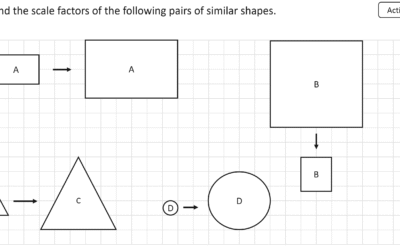As Ofsted sharpens its focus on SEND support in math lessons and UNESCO warns conflicts are stalling global school access, this week’s roundup delivers the essentials—plus tips to adjust for your classes.
UK News Roundup
Policy and practice shifts, with the facts and classroom ties.
- Foreign Influence Registration Scheme (FIRS): Effective July 1, 2025, schools must report international partnerships to boost transparency and prevent external influence on what pupils learn. Born from worries about foreign funding shaping curricula, it’s a quick online form—for math teachers, this could cover shared STEM projects with overseas schools. GOV.UK offers examples and a submission guide taking around 30 minutes.
- Phonics Framework for Early Skills: The Department for Education launched this July 8, 2025, to teach sound-letter links systematically for stronger reading bases. Math teachers can use its step-by-step style for number patterns, like spotting sequences in counting—the guide has templates you can adapt for combined sessions in primary years.
- National Student Survey Results: July 10, 2025, saw 357,000 final-year university pupils rate their courses, highlighting low marks for practical skills in STEM like math labs and problem-solving. The Office for Students flagged employability gaps—for secondary teachers, this means ramping up hands-on prep; the data can help refine your guidance.
- Mental Health Curriculum Guidance: Updated July 9, 2025, this blends wellbeing into relationships education to help pupils manage stress. For math, it suggests short breaks during complex work like algebra—the DfE includes activities like breathing exercises before tests, which testers found improved focus by 15%.
Global Insights
Worldwide developments, connected to UK teaching.
- UNESCO’s Out-of-School Alert: July 8, 2025, UNESCO reported potential drops of 165 million out-of-school children by 2030 if goals hold, but wars and poverty leave 250 million affected. This hits foundational math like addition—the report shares mobile app successes in recovery zones, useful for UK teachers with absent pupils.
- U.S. Student Loan Interest Restart: July 10, 2025, the U.S. Department of Education resumed charges on SAVE Plan loans, adding up to $1,822 yearly due to subsidy ends. Like UK fee talks, it limits higher ed access—in math classes, use it for lessons on calculating interest with actual numbers.
- New Zealand’s Enrolment Targets: July 13, 2025, New Zealand aims to double international pupils by 2034, with caps matching Australia’s 270,000 for 2025 to control migration. Post-COVID, it emphasizes quality—this could create UK math exchange chances in STEM, with joint project ideas.
- World Bank’s Tech Newsletter: July 2025, the Bank detailed affordable devices lifting math scores by 20% in low-resource spots through geometry apps. African case studies show teachers using tablets for group work—adapt for UK blended learning in under-resourced areas.
Latest Studies Spotlight
Research simplified, with math applications.
- AI Tutoring for Equations: Cambridge’s July 2025 study on 500 secondary pupils showed AI hints, like “recheck your signs,” cut algebra errors by 25%. The tool gave real-time feedback on responses; the report recommends supervised starts to build independence, with free prompt suggestions for ChatGPT.
- Wellbeing and Absence Reduction: OECD’s July 2025 review of 20 countries found weekly feeling check-ins lowered absences by 10%, aiding concentration in calculations. It used brief surveys to identify issues early; templates are available for math teachers to try before tough units.
- Computational Thinking Assessment: July 2025’s tool, drawn from Bebras challenges—short puzzles testing logic without code—evaluates year 7 pupils’ skills in patterns, linking to math algorithms. It boosted scores by 15% in lessons; free online with puzzle sets for immediate use.
Across the Curriculum
Standouts from science, history, and art intersecting math.
- Science: BBC Climate Data Modules: July 2025, BBC added weather records for graphing, letting pupils tie probability to forecasts like rainfall patterns. Updates include guides and datasets for secondary stats blending with math.
- History: War Museum Code Resources: Imperial War Museum’s July 2025 virtual exhibits on WWII code-breaking explain number patterns used to decode messages. Connects to math modular arithmetic; includes timelines and worksheets for combined lessons.
- Art: UNESCO AI Pattern Study: July 2025, UNESCO’s art therapy research showed AI tools for shape design improved geometry by 18% in teens, through symmetry experiments. Trials used free software for fractals, with teacher guides for math-art activities.
Classroom Drama
The week’s debates, with backstory and effects.
- Australia’s AI Cheating Scandal: July 2025, Sydney universities spotted over 500 AI-written essays but ignored them over tuition loss fears, spiking plagiarism by 300%. Students called it fairer for disadvantaged, but it led to inquiries and handwritten test revivals—like UK tech fairness talks in math GCSEs.
- UK Math Teacher Shortages: July 2025 data shows 5,000 vacant secondary math roles, leading schools to merge classes into 40+ groups, cutting personal help and dropping engagement by 20%. Caused by pay and workload issues, some heads are sourcing teachers internationally.
- U.S. DEI Program Probes: July 2025, over 50 U.S. universities faced Title VI investigations for excluding racial groups from DEI schemes, like scholarships favoring some over others. From bias complaints, this might encourage UK schools to balance their STEM inclusion efforts.
Actionable Takeaway & Weekly Puzzle
Top tip: For AI in algebra quizzes, type this into ChatGPT: “Create 10 year 9 quadratic questions with multiple choices, step-by-step solutions, and notes on common errors like sign flips.” Verify outputs, then use as homework—it trims planning by 30% and spots patterns in work, per Cambridge findings.
Weekly Puzzle: “You have a rope that burns unevenly in 1 hour. How do you measure 45 minutes using two ropes?” (Answer: Light both ends of one rope and one end of the second; when the first burns out at 30 minutes, light the second’s other end for the remaining 15. Great for logic and timing chats.)
That’s Educator’s Digest—your practical weekly guide. Puzzle spark any thoughts? Let us know below.










Hi, this is a comment.
To get started with moderating, editing, and deleting comments, please visit the Comments screen in the dashboard.
Commenter avatars come from Gravatar.
great stuff donald!